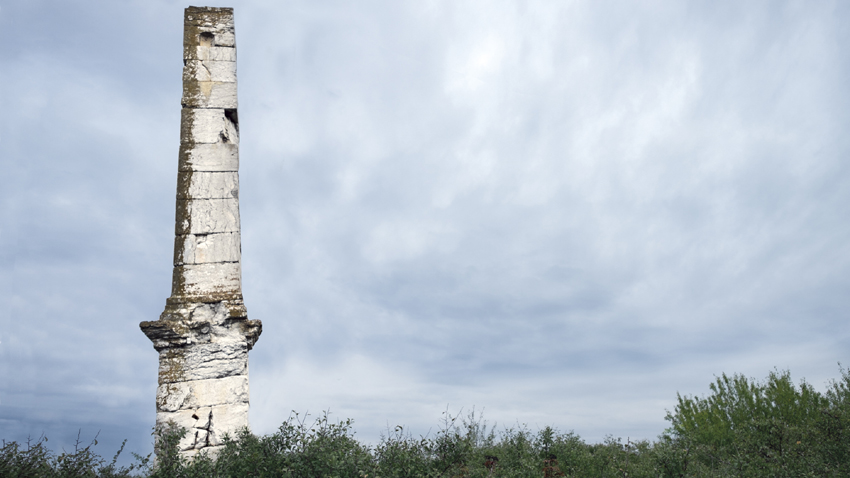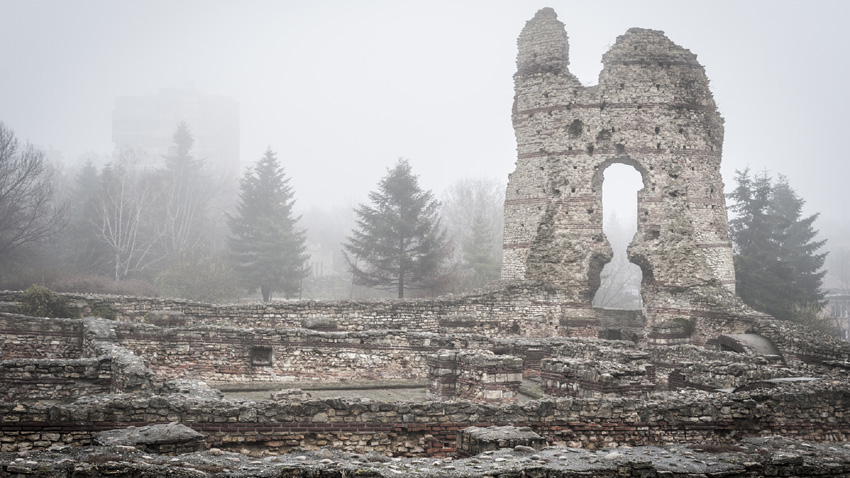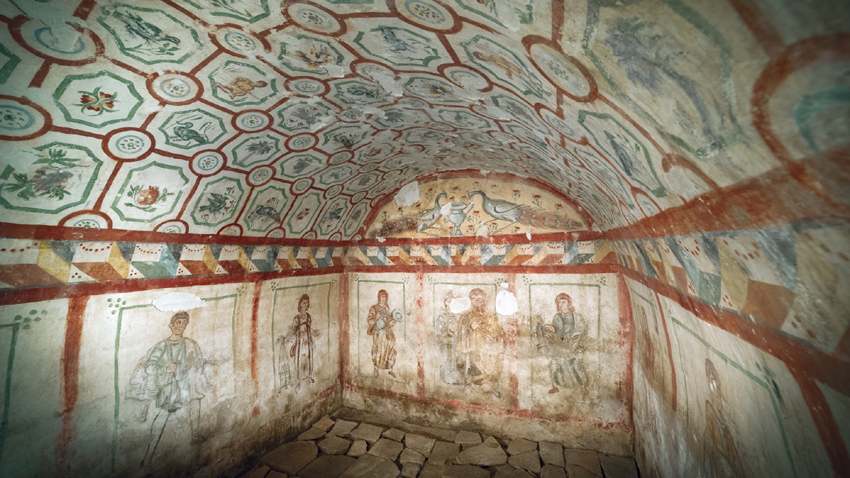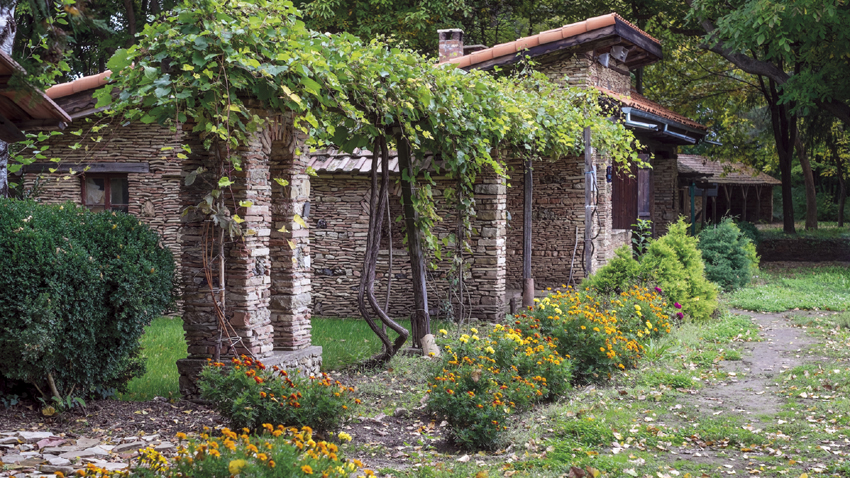 Imagine you have to wade across a field of maize, overgrown with briars. Why? To take photographs of an obelisk from Roman times, part of a high priest's mausoleum. There's no need to imagine it - that is precisely what happened to the publishers of the album A Guide to Roman Bulgaria.
Imagine you have to wade across a field of maize, overgrown with briars. Why? To take photographs of an obelisk from Roman times, part of a high priest's mausoleum. There's no need to imagine it - that is precisely what happened to the publishers of the album A Guide to Roman Bulgaria.
With the exception of Milena Raycheva, they may be familiar to you if you have read our article about the presentation of a similar album - A Guide to Thracian Bulgaria. But if we choose not to take an obelisk, hidden from view in a field of maize between the villages Mussina and Lesicheri (Northern Bulgaria) as the symbol of the Roman heritage in the country, we can take a look at the album's cover, together with the other archaeologist on the team - Dimana Trankova. On the cover we see a mosaic in the small Basilica in Plovdiv, depicting a deer:

“The deer was the symbol of several things: one was the wish of neophytes to accept Christ by being baptized, but the other possible interpretation, looking at this fawn, is that in early Christian times deers were ascribed the ability to suck snakes out of the ground with their breath. And as snakes symbolized Satan, the deer came to symbolize the victory over evil.”


 Even though Roman basilicas are among the high-profile architectural monuments in Bulgaria from the end of Antiquity and the beginning of the Middle Ages, there are others that merit attention, like the frescoes in the Silistra tomb, depicting flowers and birds, but most of all people. Dimana points out details that probably mean nothing to us, laymen, like the hairdo of one of the servants of the family couple the tomb was built for:
Even though Roman basilicas are among the high-profile architectural monuments in Bulgaria from the end of Antiquity and the beginning of the Middle Ages, there are others that merit attention, like the frescoes in the Silistra tomb, depicting flowers and birds, but most of all people. Dimana points out details that probably mean nothing to us, laymen, like the hairdo of one of the servants of the family couple the tomb was built for:
“It shows that he was not a local man, he was not Thracian, but he was not Roman either. He was a Goth and a servant - the frescoes in the tomb show the domestics of the deceased couple as well.”
Even though it was discovered in the 1940s, the tomb is not widely known, as is the case with the entire Roman heritage of Dorustorum. An episcopal centre in the times of early Christianity, during the persecutions under Emperor Diocletian at the end of the 3rd century, Silistra produced 12 martyrs who refused to venerate the emperor as a god. Being part of the Roman Empire, the towns in what are today Bulgarian territories were no different to other towns in Roman times, with Latin predominating in Northern Bulgaria. In the southern parts Greek prevailed (with the exception of some very important decrees). And the reason, as Dimana says is that “the Roman potentates were intelligent enough to realize that they cannot impose Latin in towns that were the cradle of Greek civilization.”

The city where the Roman heritage is preserved best - Plovdiv - is central to the book and its authors recommend it as the first stopover for visitors coming from abroad who do not plan to spend long in Bulgaria. Surprisingly, the second choice is connected with a small town in the North that is not well known - Pavlikeni, named after the Pavlikyani or Paulicians, the Armenian gnostic heretics who founded the town. In the 1970s treasure hunters discovered a large amount of pottery and after them archaeologists found a provincial Roman villa where pottery was made. Its production, from bricks to children's toys reached as far as Crimea. At the beginning of the 1980s an open-air museum was created there:
“This small house was made out of pieces of pottery of no scientific value. There were furnaces here and demonstrations are organized of every stage of the process with the help of children from the pottery school in the town of Troyan nearby. Every VIP visitor was able to make a brick and sign his or her name on it. Now these bricks are arranged in a wall, starting with Lyudmila Zhivkova (daughter of communist dictator Todor Zhivkov, minister of culture at that time) and ending with the treasure hunters in question with their sweet-sounding admission that “we were here first”.
English version: Milena Daynova
Photos: Anthony GeorgieffAbstract, objectless, geometric – this is an entire concept of meaning and design on which 20th century art is based. The leading and connecting idea in it is the freedom of the author, but also of his or her audience. Visually, through geometric art,..
VFU (Visionary Font Ultra) – this is the name a third-year student from Varna Free University, Volodymyr Fedotov, has given to the font he is presenting at the International Triennial of Typography in Poland. “To create a font takes a sense of..
On the 143 rd birth anniversary of foremost Bulgarian painter Vladimir Dimitrov-the Master, an award ceremony will take place at the art gallery in the town of Kyustendil, at which the national prize for painting for 2024 will be awarded...

+359 2 9336 661
